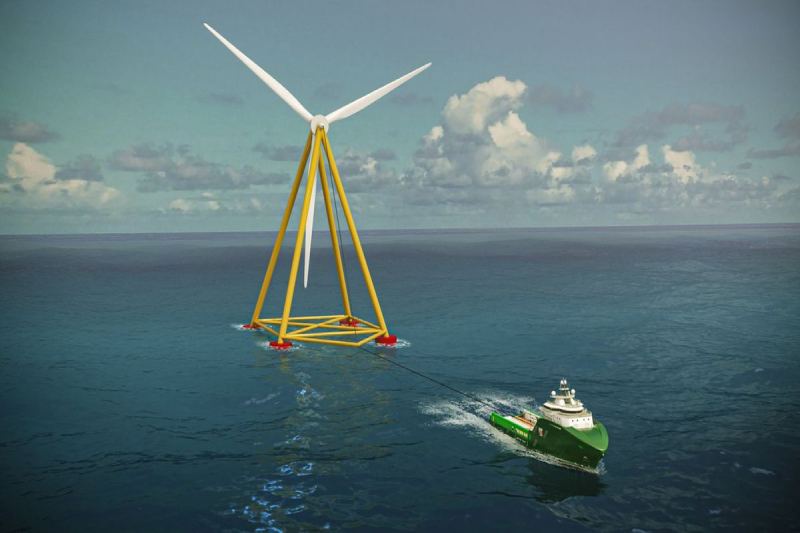
US startup replaces towers with wind-dancing turbines installed atop pyramids
- Business
- December 9, 2023
This week saw the debut of a novel floating offshore wind turbine prototype in New Bedford, Massachusetts. The approach makes use of a pyramid base that can passively orient itself in the direction of the wind rather than a single anchor tower.
Larger wind turbines can cover greater ground in a single rotation, so wind farms are moving offshore to take full advantage of strong sea winds. Although the cost of wind energy has been falling over time, the costs and setup time for new wind farms will inevitably rise as they are erected farther out into the ocean.
A Chinese wind turbine manufacturer demonstrated how to install a turbine in just one day, as reported by Interesting Engineering. Although the achievement is impressive, it is possible if you have strong equipment and favorable weather on your side. T-Omega Wind (TOW), based in Boston, Massachusetts, takes a completely different tack when it comes to simplifying the installation and upkeep of offshore turbines.
pyramid-shaped floating wind turbines
The creators of TOW have solved a significant problem for the wind industry with a straightforward strategy. The company contends that in order to maintain the single central tower upright, four tons of weight must be installed underneath for every ton of weight that must be installed above the water.
Because TOW’s design does not include a central tower, they do not require a large counterweight, which reduces the cost of building materials and labor. TOW uses a double-sided axle supported at both ends in place of a single-sided pinwheel turbine design. Diagonal supports, when joined to their bottoms, form a pyramid base, supporting the weight at each end.
To keep the entire assembly above the water while tying it to the sea bed, the pyramidal base is fitted with floats. This arrangement not only keeps the turbine from floating away, but it also allows it to passively align itself with the direction of the wind.
Prototype advancement
This design also has the benefit of allowing a turbine to be assembled, brought onshore, and towed to the wind farm’s location. To further cut operating costs, utility companies do not need to invest in crane ships to oversee turbine maintenance because maintenance facilities can be located onshore.
Thus far, TOW has only tested the model in a wave tank at 1/60th of its true scale. Promising results from the prototype confirmed that the design allowed for a full-scale version to withstand waves up to thirty meters (98 feet) high.
The company has now deployed a 1/16th scale prototype off the coast of New Bedford, Massachusetts, as it enters the real-world testing phase. Brita Formato, CEO of TOW, stated in a press release, “Our team is thrilled to take this next step in launching our groundbreaking technology.”
“Floating offshore wind is a critical energy source for reaching multiple state and federal goals by 2030. T-Omega Wind’s radically redesigned floating offshore wind turbine will solve most of the challenges in an elegant and cost-effective manner.”
The company has not disclosed the duration of the testing, but they anticipate releasing commercial versions of the turbines soon. The company estimates that its Levelized Cost of Energy (LCoE) is approximately US$50 per megawatt-hour, or about the same as current offshore wind farms. They anticipate that economies of scale and full-scale versions will enable them to further reduce this.